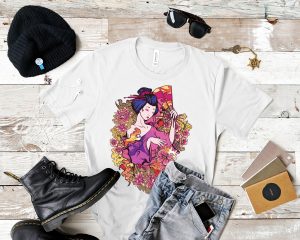Mandala art therapy is a form of therapy that involves creating and coloring mandalas to promote healing and self-expression. A mandala is a circular design that is used in Hindu and Buddhist spiritual practices to represent the universe and one’s place within it. In mandala art therapy, the focus is on creating and coloring a mandala to promote relaxation, mindfulness, and self-awareness.
Therapeutic Benefits of Mandala Art
The therapeutic benefits of creating and coloring mandalas have been recognized for centuries, and mandalas have been used as a tool for meditation and spiritual practice. In recent years, mandala art therapy has become a popular form of therapy that is used to help individuals cope with stress, anxiety, and other emotional and mental health issues.
Mandala art therapy is a form of expressive therapy, which means that it is a non-verbal form of therapy that allows individuals to express themselves through art. Creating and coloring a mandala can be a meditative process that helps to quiet the mind and promote relaxation. The repetitive patterns and shapes of the mandala can also be soothing and comforting, and can help to promote a sense of inner peace and calm.
Explore your emotions through Mandalas
In addition to promoting relaxation and mindfulness, mandala art therapy can also be used to help individuals explore their emotions and thoughts. The colors and patterns that are used in the mandala can be used to represent different emotions, and can be a way for individuals to express and explore their feelings in a safe and non-threatening way.
Mandala art therapy can be done individually or in a group setting, and can be used by individuals of all ages. It can be particularly beneficial for individuals who are dealing with stress, anxiety, depression, or other emotional and mental health issues. It can also be used as a tool for self-discovery and personal growth.
Meaning of the Colors of a Mandala
In mandala art therapy, the colors that are used in a mandala can have significant meaning and can be used to represent different emotions, thoughts, and states of being. Here are some common meanings of colors in mandala art therapy:
- Red: symbolizes energy, passion, and strength. It can also represent anger, danger, and aggression.
- Orange: symbolizes creativity, joy, and enthusiasm. It can also represent excitement and stimulation.
- Yellow: symbolizes intellect, wisdom, and happiness. It can also represent caution and anxiety.
- Green: symbolizes growth, balance, and harmony. It can also represent envy and jealousy.
- Blue: symbolizes calmness, serenity, and communication. It can also represent sadness and depression.
- Purple: symbolizes spirituality, intuition, and royalty. It can also represent arrogance and extravagance.
- White: symbolizes purity, innocence, and clarity. It can also represent emptiness and detachment.
- Black: symbolizes power, mystery, and death. It can also represent fear and negativity.
When creating a mandala for art therapy purposes, individuals can choose colors based on the emotions or states of being they wish to explore or express. For example, if someone is feeling anxious, they may choose to use blue and green colors in their mandala to promote calmness and balance. Alternatively, if someone is feeling stuck or stagnant, they may choose to use red or orange colors to promote energy and movement.
The meaning of colors in mandala art therapy can be subjective and can vary based on cultural and personal associations. Therefore, it is important for individuals to choose colors that feel authentic and meaningful to them in their own healing process.
Mandala Art: Conclusion
Overall, mandala art therapy is a powerful tool for promoting relaxation, mindfulness, and self-awareness. It allows individuals to express themselves through art and can be a valuable tool for exploring and processing emotions. Whether done individually or in a group setting, mandala art therapy can be a powerful tool for promoting emotional and mental health.




